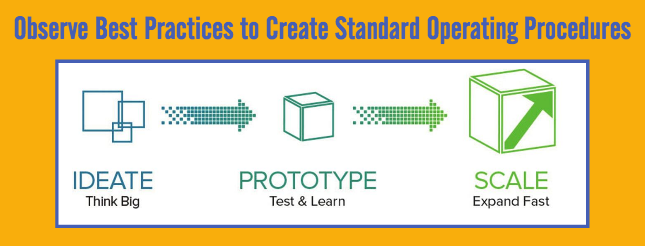M+E Daily

M&E Journal: Building a Data-Based Team: Quick Wins and Avoidable Speed Bumps
Story Highlights
By By Alex Akers, Kurt Stuve, and Jason Ott, Senior Consultants, Cognizant Business Consulting –
The avalanche of data generated by consumers annually does not seem to show any signs of slowing. An IDC Research Report from November 2015 predicts that the market for big data technology and services will increase at a compound annual growth rate (CAGR) of 23 percent through 2019, with the media industry ranking in the top three fastest growth industries at 25 percent CAGR. From the standpoint of M&E companies, this robust growth can create significant hurdles in sifting through the pool of big data to uncover the meaningful consumer insights that effectively drive business strategy.
In addition to this growing accumulation of data, there are more options for vendors of data analysis tools as well as touch points to reach consumers. In concert, these factors create growing complexity for M&E companies seeking to leverage the sea of available information. However, by observing a set of key best practices in data science and analytics, media companies can mitigate the risks associated with big data and stand to avoid some of the most common pitfalls.
These best practices include:
1. Guaranteeing accurate conclusions by validating and confirming initial findings
As analytics tools become increasingly automated and sophisticated, the “distance” between what the raw data looks like and what the end-user sees grows as well. It is tempting to step back, let a vendor install its standard analytics package, and segue directly into reviewing outputs from the new tool. Many of our partners use a “data-driven” approach where they “let the data speak for itself.” Indeed, removing user bias is a hallmark of a sound data strategy. Randomly distributed data, representative samples, and “clean” data are gold standards of academic statistical research.
However, they are incredibly rare in most business use cases. Given that, it is critical to ensure that bias is not baked in at the onset by understanding your organization’s raw data and the nature of the audience evaluated.
For example, one of our clients was using data available from its customer-facing website to better understand how to market its entertainment products, analyzing that data to develop strategic recommendations to its marketing stakeholders. However, the company did not account for the bias inherent in the audience that regularly patronized this particular website, leading to recommendations accidentally tailored to only one customer segment. By helping the company understand its base audience, we were able to filter out the behavior endemic to the site audience from the behavior related to the products the company was looking to evaluate.
2. Retaining customer loyalty by not overwhelming the high value/ touch point segment
In years past, all surefire marketing efforts and initiatives were led by simply identifying the company’s most valuable customers. Today, knowing your customer is only the first step, a bare minimum requirement. To effectively recognize, reach, and retain customers now requires a complex customer data cocktail including knowing:
* Where your customers are – demographically and geographically;
* What channels they are most active in;
* When they are most engaged;
* What content resonates most with them;
* What products they’re interested in.
Almost equally important is understanding the inverse of these questions, allowing companies to avoid unnecessary marketing spend. In other words, where aren’t your core consumers?
Another key consideration is the notion of cadence … how much communication is too much? This is a trickier situation. In 2015, despite much ridicule regarding the flood of Fan- Duel and DraftKings advertisements during the first few weeks of the NFL season, the daily fantasy sports sites drew in hundreds of thousands of new customers each week and posted many record-breaking weeks in terms of entry fees. While there still is quite a bit of speculation surrounding the future of fantasy sports sites, it would appear that, for now, the sites are comfortable with their advertising strategy, especially given the positive reviews of the products, as well as the significant demand for them. Once a user is acquired, special care should be taken when directly targeting them via email or in app/SMS messaging, as direct communications can quickly become tiresome for consumers.
A robust communication preference center is essential for enabling your core customers to adjust the volume. The best bet is to have a consistent sense of how your customers react to your communications. A balanced measurement method of acquisition, churn, and engagement will lead to better understanding the story behind the data.

3. Protecting your data and ensuring that your house is secure
Data security breaches have affected a number of very well regarded companies. In 2014, the very unfortunate hack at Sony Pictures reminded the industry that customer trust is hard to win, and easily lost. To start, find a partner with an established track record and strong industry reputation. However, often a good partner may not be enough, as many of the most common issues in recent years have had less to do with technology or security gaps and more to do with failures regarding security training or institutionalized protocols. In some cases a “one-size-fits-all” security approach works. In others, complex security policies and security architectures may make more sense.
Design with the end users in mind via detailed requirements sessions and security workshops are routinely revisited. It is especially important to measure the volume and frequency of incidents over time to better define and evaluate security processes as your business divisions and teams evolve.
4. Carefully aligning vendors/ platforms with your foundation
Not too long ago, a studio exec shared with us, “It’s easier to ask me what BI and analytics tool I don’t have since the list is much shorter.” A very crowded and fragmented market has developed over the ensuing years. The variety of vendors and strategic partners emerging in the analytics and business intelligence spaces can quickly become overwhelming.
 In building out your program, it’s very important to have a clearly defined idea of what your expectations are for any new partner, using a variety of measurable and comparable categories (technology, support, cloud, training, etc.). A little collaboration can go a long way in driving efficiency and best practices.
In building out your program, it’s very important to have a clearly defined idea of what your expectations are for any new partner, using a variety of measurable and comparable categories (technology, support, cloud, training, etc.). A little collaboration can go a long way in driving efficiency and best practices.
Nonetheless, having a rubric to measure vendors and strategic partners can prove invaluable when drafting requests for proposals, not to mention more direct meetings with technology partners at conferences and events. Other questions to ask a potential partner include:
* What is its product roadmap?
* Are there any talks of acquisition?
* Is it engaging with any other clients in your industry?
Remember, the best technology vendors are those that act as strategic partners.
5. Avoiding rushing to the perfect end solution by starting small and iterating with pilot initiatives
“Just find me the data that supports our decision.” Sound familiar? It can be frustrating when the data the team has worked so hard to develop and understand does not return expected results to support current strategy. However, this is the point of a data strategy – to understand the reality of the business case, not to support a pre-determined conclusion. Data operates in an agile state of mind – it throws you curveballs that often lead to unimaginable insights. With that in mind, it is advantageous to operate in a way where data drives strategy.
Start small – understand the information flowing in, create hypotheses, test, iterate, and with the new findings in hand, iterate again. Initially, most hypotheses you pose will lead to more questions. However, by applying a structured process to your line of investigation, those questions will lead to the answers that end up becoming the foundation of your analytical model. the nature of your audience before diving into more lengthy articles, blogs, and other media. These pilot test cases will lead your team to new and unexpected sources of truth, and often lead you to discard prized data sets for heretofore undiscovered sources of insight.
Conclusion
The data revolution brings substantial opportunity for film studios, broadcasters, and other media companies to understand their consumer base and develop campaigns that efficiently target their markets. While the final impact of big data on media remains to be seen, past experiences can serve to establish current and future best practices that define and advance a data-driven strategy.
Click here to translate this article
Click here to download the complete .PDF version of this article
Click here to download the entire Spring 2016 M&E Journal









